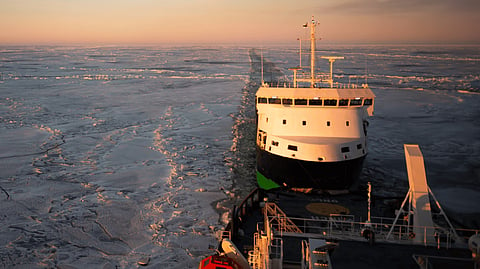Finnish design firm secures icebreaker contract
The Finnish Transport Infrastructure Agency (FTIA) has awarded local engineering firm Aker Arctic the design contract for a new icebreaker that will incorporate the latest technology.
Finnish icebreakers are classified based on a three-tier system with class A being the largest and most powerful, and class C being more akin to a large ice-strengthened tug. Finland’s newest icebreaker Polaris, also an Aker Arctic design, belongs to the highest category, while Voima is the country’s sole B-class icebreaker.
Aker Arctic will develop at least two design packages for an intermediate-class icebreaker referred to as B+, a compact icebreaking vessel more capable than what the current requirements would call for in mid-tier icebreakers.
Aker Arctic said the ongoing icebreaking season has again demonstrated how ice fields tend to be more dynamic and heavily fragmented during mild winters, including wide slush barriers and areas of open water.
The prevailing ice conditions can thus be a major obstacle to commercial shipping and present challenges for the assisting icebreakers even when the ice cover is not particularly thick. Aker Arctic remarked that this will require new thinking regarding the design criteria for the next generation of icebreakers.
The B+ project will commence with an evaluation of three alternative fuels – liquefied biogas, methanol, and ammonia – for their technological maturity and feasibility in this project. Afterwards, the FTIA will select one as the basis for the development of the B+ icebreaker concepts.
Three propulsion configurations will be compared. In addition to twin- and triple-azimuth alternatives, a concept of combining shaft lines in the stern and azimuthing propulsion in the bow will be considered.
At least two variants will be evaluated with model tests to verify their performance and ensure their ability to adapt to the changing operating environment.
"The idea is to deploy a smaller vessel to the Bothnian Bay in early winter and move to the Bothnian Sea or Gulf of Finland later in the season," said Tuomas Romu, Chief Designer at Aker Arctic.
"Our thorough research in the previous project allows us to build on existing knowledge rather than start from scratch. However, alternative fuels and engine technology are developing very rapidly these days."
The development of the three concept alternatives started in April 2025 and the final design packages are scheduled for delivery in early 2026. These can then be used for competitive tendering of the construction of the icebreaker.


